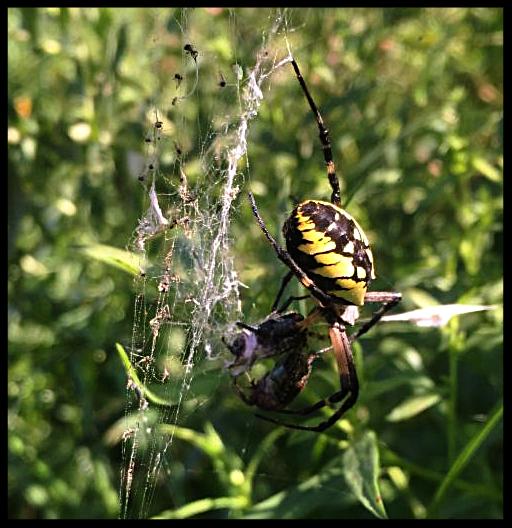Seasonal Observations- 2018
Wow, the state fair has come and gone, and now the Vikes are providing their purple perennial drama right on cue. As fall approaches, we start to reflect on how fast this summer has gone by. Each year is unique and definitely takes on its own character. Here are some of our observations that helped to shape our 2018 growing season.

Remember our "spring"? It was like the weather gods flipped a switch and we went from "cold and snow" to "hot and humid" overnight. With the deep snow going into April followed by temperatures reaching into the 90's in May, we were very interested in how this would impact our native plant communities. Fortunately, the wet and hot summer seemed to jump-start our native flowers and they really bloomed spectacularly. We noticed that the grasses seemed to bloom a bit later, but when they did arrive, they too put on a wonderful display.
No two years are the same for ecological restorations.

With plant communities, individual species will flourish one year, and then the next year, a different species will take its turn. For instance, last year we noticed an abundance of cardinal flower, but sneezeweed seemed to be more subdued than usual. This year we are observing the exact opposite, with much less cardinal flower and way more sneezeweed jumping up and blooming impressively. The same is true with invasive species. Last year seemed to be a good year for crown vetch, with it being very abundant and aggressive. This year it seemed less abundant. Along the water's edge, purple loosestrife and reed canary grass seemed to have enjoyed the late spring and hot summer, which has kept our maintenance staff on full alert.

What about the pollinators? Over the last several years, we have noticed pretty low monarch caterpillar and adult sightings. While this year, we were surprised to see a considerable jump in sightings of both. We noticed multiple caterpillars on many swamp and common milkweed plants and plenty of adult butterflies swooping above us while we monitored our restorations. We also noted an abundance of tussock moth caterpillars, which also use milkweed as a host plant. Our crews also found more giant silk moth

caterpillars in our restorations this year, which are always fun to find. Other years we have seen many more swallowtail butterflies than monarchs. This year, we waited for the swallowtails to emerge, but we saw very few caterpillars and the adults were only seen a few times a month. Red admiral, American lady, and painted lady butterflies also seemed less abundant to us than other years. These observations remind us of how important it is to plant a diversity of native plants for multiple species of pollinators.
One defining feature of this season was the abundance of

Japanese beetles. Luckily they seem to prefer a good number of ornamental cultivars compared to our native plant species. We saw many Japanese beetles stuck in yellow garden spider webs. These spiders were doing a great job in reducing this pest in a large number of our restorations. Bees and wasps didn't seem to mind the beetle invaders; they went about their busy schedules despite having to work around the Japanese beetles. We observed an abundance of bumble bees, wasps, flies, and hornets using our native plants to collect pollen and nectar. It's a special treat to weed a restoration with the loud buzzing of hundreds of native bees working around you, enjoying the native plants!

As summer turns to fall, our late-season native plant species
like aster species and zigzag goldenrod
are jumping into the forefront. Last year, we were fortunate to have an amazing show of beautiful fall tree colors. This had to do with a favorable combination of moisture levels, temperatures, and wind. We can only hope for a repeat performance this autumn season!
We all learn from each other's field observations. What have been some of your observations this summer? Does your restoration or native planting change each year? Let us know! We would love to hear about your observations on our
Facebook or
Twitter. Thank you for another wonderful restoration season!